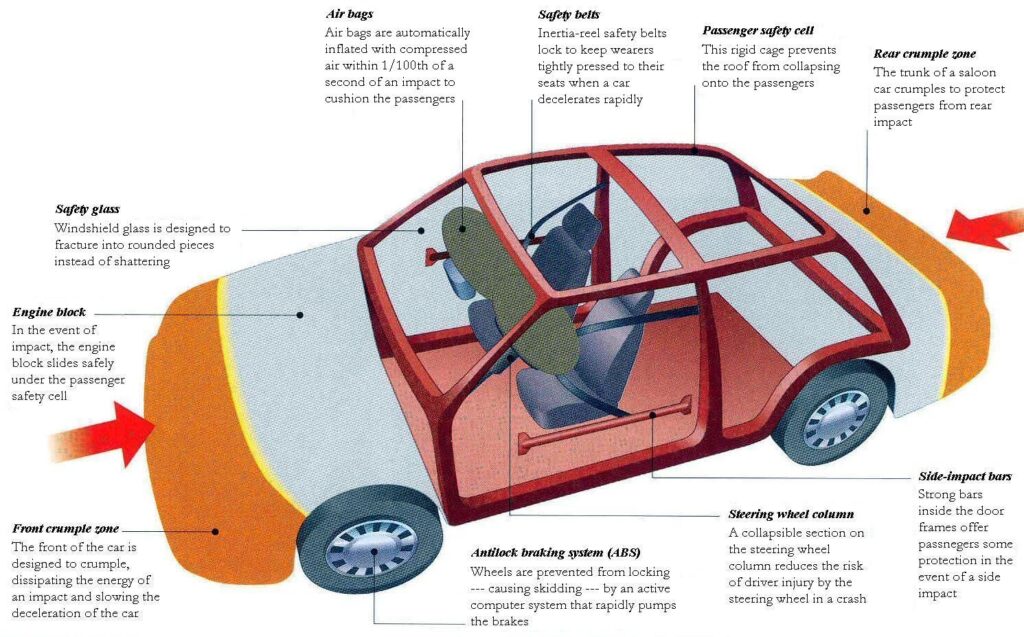As technology continues to evolve, the impact of AI on vehicle safety has become a pivotal topic in the automotive industry. Artificial intelligence is revolutionizing how vehicles operate, enhancing safety features, and reducing the likelihood of accidents. With advancements such as automated braking systems, lane-keeping assistance, and predictive analytics, AI is not just a trend but a transformative force that promises to make our roads safer. In this article, we will delve into the various ways AI is reshaping vehicle safety and the implications for drivers and pedestrians alike.
In the following sections, we will explore the specific AI technologies that are currently being integrated into vehicles and how they contribute to accident prevention. From real-time data processing to machine learning algorithms that adapt to driving patterns, these innovations are setting new standards for safety. Additionally, we will discuss the role of AI in emergency response scenarios and how it can potentially save lives by providing critical information to first responders.
Moreover, we will examine the challenges and ethical considerations surrounding the implementation of AI in vehicles. As we navigate this new landscape, understanding the balance between technology and human oversight is crucial. Join us as we uncover the multifaceted impact of AI on vehicle safety and what the future holds for this exciting intersection of technology and transportation. Read on to discover how these advancements are not only enhancing safety but also reshaping the way we think about driving.
Artificial Intelligence (AI) is revolutionizing various industries, and the automotive sector is no exception. The integration of AI technologies into vehicles is significantly enhancing safety measures, reducing accidents, and improving overall driving experiences. This article explores the multifaceted impact of AI on vehicle safety through several key subtopics.
Advanced Driver Assistance Systems (ADAS)
Advanced Driver Assistance Systems (ADAS) are among the most significant applications of AI in vehicle safety. These systems utilize AI algorithms to analyze data from various sensors, including cameras, radar, and lidar, to assist drivers in real-time. Features such as lane departure warnings, adaptive cruise control, and automatic emergency braking are designed to prevent accidents and enhance driver awareness.
By providing timely alerts and taking corrective actions, ADAS can significantly reduce the likelihood of collisions. Studies have shown that vehicles equipped with these systems experience fewer accidents, highlighting the importance of AI in promoting safer driving environments.
Predictive Maintenance
Predictive maintenance powered by AI is another crucial aspect of vehicle safety. By analyzing data from vehicle sensors, AI can predict potential mechanical failures before they occur. This proactive approach allows for timely maintenance, reducing the risk of breakdowns and accidents caused by vehicle malfunctions.
For instance, AI can monitor engine performance, tire pressure, and brake conditions, alerting drivers to issues that require attention. This not only enhances safety but also extends the lifespan of the vehicle, making it a win-win for both manufacturers and consumers.
Autonomous Vehicles
The development of autonomous vehicles represents a significant leap in vehicle safety. AI systems in self-driving cars are designed to make split-second decisions based on real-time data from their surroundings. By eliminating human error, which is a leading cause of accidents, autonomous vehicles have the potential to drastically reduce road fatalities.
Moreover, these vehicles are equipped with advanced sensors and machine learning algorithms that continuously improve their performance. As they learn from various driving scenarios, their ability to navigate complex environments safely increases, further enhancing overall road safety.
AI in Traffic Management
AI is also playing a vital role in traffic management systems, which indirectly contributes to vehicle safety. Smart traffic lights and AI-driven traffic flow management can reduce congestion and minimize the risk of accidents caused by stop-and-go traffic. By optimizing traffic patterns, AI helps maintain a smoother flow of vehicles on the road.
Additionally, AI can analyze traffic data to predict peak times and suggest alternative routes, helping drivers avoid potentially hazardous situations. This proactive approach to traffic management is essential for improving overall road safety.
Enhanced Vehicle Communication
Vehicle-to-Everything (V2X) communication is an emerging technology that leverages AI to enhance vehicle safety. This system allows vehicles to communicate with each other and with infrastructure, such as traffic signals and road signs. By sharing information about road conditions, accidents, and traffic patterns, V2X communication can help prevent collisions and improve situational awareness for drivers.
For example, if a vehicle detects a sudden stop ahead, it can alert nearby vehicles, allowing them to react accordingly. This interconnectedness fosters a safer driving environment and reduces the chances of accidents caused by unforeseen circumstances.
AI-Driven Driver Monitoring Systems
Driver monitoring systems powered by AI are designed to assess driver behavior and detect signs of fatigue or distraction. By using cameras and sensors, these systems can analyze facial expressions and eye movements to determine whether a driver is alert and focused.
When signs of drowsiness or distraction are detected, the system can issue warnings or even take control of the vehicle if necessary. This technology is crucial for preventing accidents caused by driver inattention, making it an essential component of modern vehicle safety.
Data-Driven Safety Improvements
AI enables manufacturers to analyze vast amounts of data from vehicle performance and accident reports to identify safety trends and areas for improvement. By leveraging this data, automakers can enhance vehicle designs and safety features, ultimately leading to safer vehicles on the road.
For instance, analyzing crash data can reveal common factors contributing to accidents, allowing manufacturers to implement targeted safety measures. This data-driven approach ensures that vehicle safety continues to evolve in response to real-world challenges.
Ethical Considerations in AI Safety Systems
As AI technologies become more integrated into vehicle safety systems, ethical considerations must be addressed. Questions surrounding liability in the event of an accident involving autonomous vehicles, as well as the potential for bias in AI algorithms, are critical issues that need careful examination.
Ensuring that AI systems are transparent, fair, and accountable is essential for building public trust in these technologies. As the automotive industry continues to innovate, addressing these ethical concerns will be vital for the successful implementation of AI in vehicle safety.
Artificial Intelligence (AI) is revolutionizing the automotive industry, particularly in enhancing vehicle safety. Below is a summary of the key impacts of AI on vehicle safety.
| Aspect | Description |
|---|---|
| Advanced Driver Assistance Systems (ADAS) | AI powers systems like lane-keeping assist, adaptive cruise control, and automatic emergency braking, which help prevent accidents by assisting drivers in real-time. |
| Predictive Analytics | AI analyzes data from various sources to predict potential hazards and vehicle malfunctions, allowing for proactive maintenance and risk mitigation. |
| Autonomous Vehicles | Self-driving cars utilize AI to interpret sensor data, make decisions, and navigate safely, significantly reducing human error, which is a leading cause of accidents. |
| Driver Monitoring Systems | AI systems monitor driver behavior, detecting signs of fatigue or distraction, and can alert the driver or take corrective actions to enhance safety. |
| Enhanced Crash Avoidance | AI algorithms analyze real-time data to enhance crash avoidance systems, improving response times and accuracy in emergency situations. |
| Data-Driven Safety Improvements | AI helps manufacturers analyze accident data to identify trends and improve vehicle designs, leading to safer vehicles over time. |



